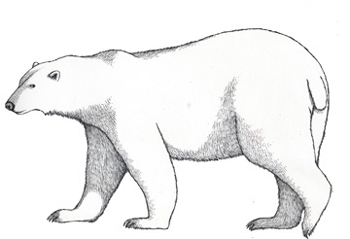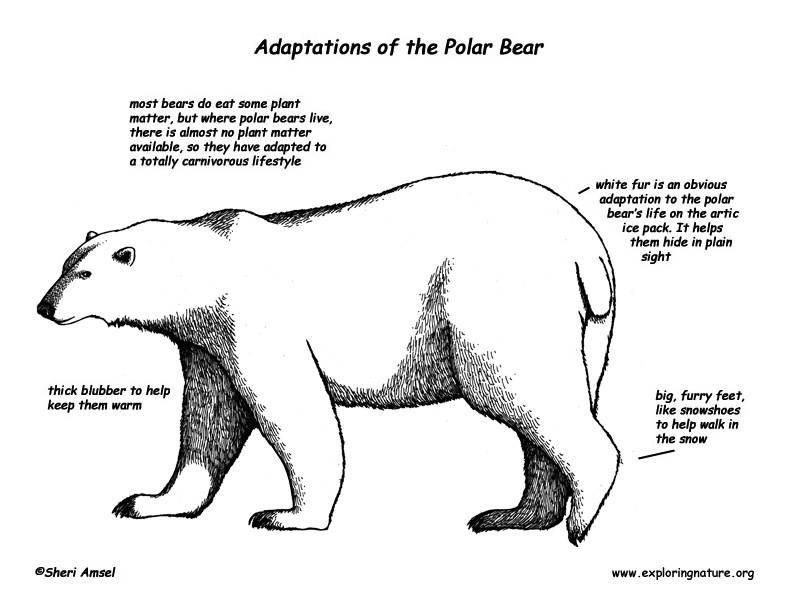

Adaptation in a population of living things happens as a result of an adaptive trait. This is any inheritable trait that increases its survival rate so that it can live longer, reproduce longer, and have more offspring (that also have that trait). Adaptive traits can improve an animal's ability to find food, make a safer home, escape predators, survive cold or heat or lack of water.
The polar bear has many adaptations for its life on the polar ice pack. Their *white-looking fur helps them hide in plain sight. This is a good thing as there are no trees or rocks to hide behind in their habitat. Blending in is the only way to hide. This adaptive trait is a physical adaptation.
They also are one of the only bears that have a totally carnivorous diet. This means that they eat only meat. Most bears are omnivores and do eat plant matter. But where polar bears live, there is almost no plant matter available, so they have adapted a totally carnivorous lifestyle. Their long, sharp claws help them pull seals right out of the water when they surface to breathe and onto the ice where the bears can feed.
Polar bears also have thick blubber and dense fur to help keep them warm. They have big, furry feet that act like snowshoes to help them walk on the snow. These are all physical adaptations that help a polar bear survive in its environment.
*Read more about polar bear fur and physical traits here.
For Discussion and Critical Thinking:
The polar bear has adaptive traits that help it survive out on the polar ice cap.
1. Name one of the polar bear’s adaptive traits and how it helps them survive:
2. Can you think of other animals that live in the Arctic and have adataptive traits? Name two and describe their adaptive traits and how they help them survive.
3. If the polar ice caps melt so that the brown tundra is exposed, how will this affect the polar bear?
4. Do you have any physical traits that help you survive? Discuss one.
When you research information you must cite the reference. Citing for websites is different from citing from books, magazines and periodicals. The style of citing shown here is from the MLA Style Citations (Modern Language Association).
When citing a WEBSITE the general format is as follows.
Author Last Name, First Name(s). "Title: Subtitle of Part of Web Page, if appropriate." Title: Subtitle: Section of Page if appropriate. Sponsoring/Publishing Agency, If Given. Additional significant descriptive information. Date of Electronic Publication or other Date, such as Last Updated. Day Month Year of access < URL >.
Amsel, Sheri. "Adaptations of the Polar Bear" Exploring Nature Educational Resource ©2005-2024. December 13, 2024
< http://www.exploringnature.org/db/view/Adaptations-of-the-Polar-Bear >

